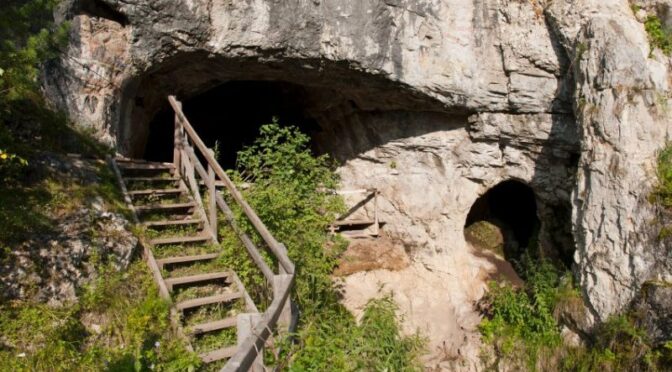A missing link from our evolution: Inside the cave that was home to several human species, including the mysterious Denisovans
After studying DNA from teeth and a pinky bone discovered in a Siberian cave, geneticists found out that they belonged to individuals living thousands of years apart. This has provided insight into the life of this mysterious human species.
Denisovans are considered to be a sister species of the Neanderthals that emerged 200 000 years ago. It is believed that they lived on the plains of Siberia and East Asia before modern humans arrived on the continent. Studying them is difficult because very fossilised remains are discovered.
Today, researchers know more about how the Denisovans lived. They constantly inhabited the same caves.

With the help of a new DNA analysis technology used on a teeth and a fragment of pinky finger bone that were found at the Denisova cave in Altai Krai, in the Altai Mountains near Barnaul, Russia, the researchers discovered that these fossils belonged to three individuals who lived thousands of years apart.

The analysis of the pinky finger bone fragment (which belonged to a young girl), revealed they were a species closely related, but different from Neanderthals. This opened some questions for anthropologists. Was the cave a temporary shelter for the Denisovans or was it a permanent settlement for them?
The latest study presented at the annual conference for the European Society for the Study of Human Evolution, tells that the girl has lived around 50 000 years ago.
On the other hand, the DNA from teeth that belonged to two other individuals (adult male and a young female), shows that they were in the cave 65 000 earlier. but there are many different ideas about the age of the specimens.
Other tests suggested the tooth of the young female is probably 170,000 years old and the molar tooth is from an adult male that lived 7 500 before the girl (to which the bone fragment belonged).


These findings show us that the cave probably served as a regular living space for the Denisovans. It appears that they had a real sense of “home”.
Viviane Slon, a geneticist working for paleogeneticist Professor Svante Pääbo at the Max Planck Institute for Evolutionary Anthropology in Munich, Germany, said the DNA analysis showed the Denisovans had surprisingly diverse genomes.
One suggestion is that instead of living in small isolated groups they were mixing and breeding to ensure they high genetic diversity. However, the age gap can also explain the diversity. The prolonged period in which they lived in the cave may be the cause of that.


Another study at the Denisova cave by geologist Professor Tom Higham, an expert on radiocarbon dating, and Dr Katerina Douka, an archaeologist, both at the University of Oxford, showed that more than one human species used the cave.
They found a toe bone from a Neanderthal that is around 50 000 years old. Remains from Homo Spaiens that occupied the cave around 45 000 years ago were also found.

According to Dr Douka, the remains of different human species in the cave, can lead to theories that Neanderthals, Denisovans and modern humans were interbreeding.
